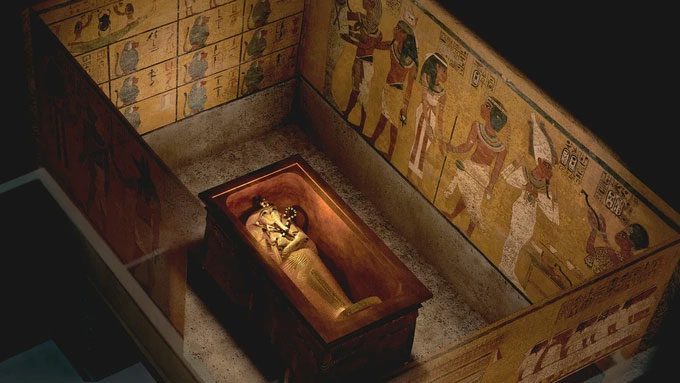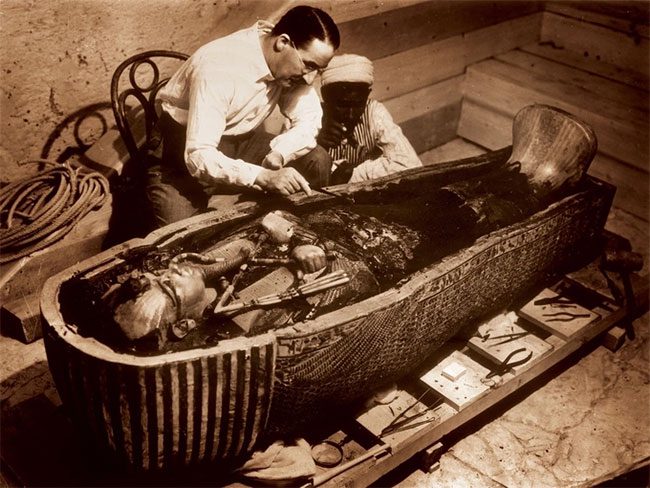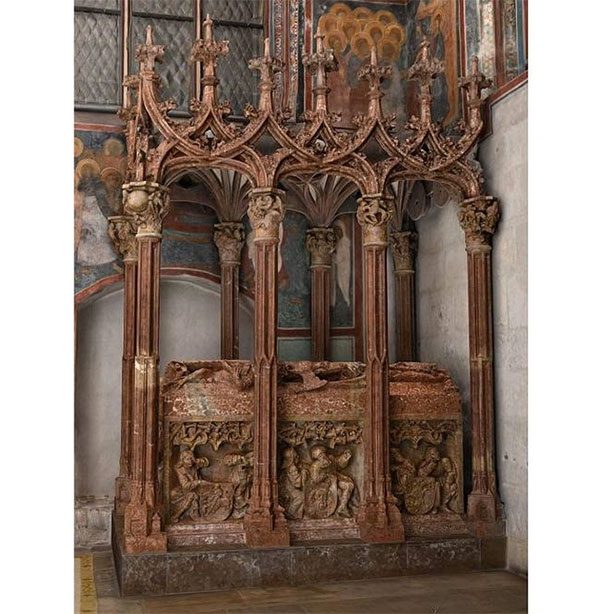Scientists have shed light on the connection between a deadly toxic fungus found in the tomb of Polish King Casimir IV Jagiellon and its association with the curse of Egyptian Pharaoh Tutankhamun.
The Mysterious Death
In 1922, when British archaeologist and Egyptologist Howard Carter and his team discovered the tomb of King Tutankhamun, it sparked immense public interest.
The legend of the curse began circulating during the excavation of the young king’s tomb. At that time, Howard Carter, along with British archaeologist Lord Carnarvon, unearthed the “Valley of the Kings.”
At the entrance of the tomb, there was an inscription carved into the stone: “I am the one who suppresses tomb robbers by the desert fire. I am the guardian of King Tutankhamun’s tomb.”
On a pottery fragment found in a chamber containing the sarcophagus, there was another inscription stating “death will touch its wings to anyone who disturbs the peace of the pharaoh.”

The tomb of King Tutankhamun in Egypt. (Photo: National Geographic).
In fact, these two inscriptions could be seen as a threat to tomb robbers.
However, it must be acknowledged that strange events and mysterious deaths did occur. Back in November 1922, even before Carter opened the sarcophagus, an ominous sign appeared: the lucky canary of the archaeologists died… notably, it was swallowed by a cobra – considered the totem animal of the Egyptian pharaohs.
By mid-March 1923, Lord Carnarvon died from a fatal infection. Following this event, the press continued to speculate about the deaths, which were said at the time to be related to the curse of King Tutankhamun.
This was followed by the sudden deaths of two Egyptologists who had visited the tomb, along with the brother, nurse of Lord Carnarvon, and Howard Carter’s secretary, who also passed away.
A question arose at that time: Was the death of the archaeologist directly related to the tomb?

Scientist Howard Carter excavating the remains of the young king Tutankhamun. (Photo: National Geographic).
At the time of Lord Carnarvon’s death, Howard Carter was conducting research to try to understand what killed his colleague and to mitigate the legend of the curse.
The scientific explanation proposed could be due to toxic pathogens that those who came into contact with the tomb might inhale.
In March 1939, Howard Carter passed away at the age of 63 from lymphoma, 17 years after the tomb was opened.
Even today, the discovery of Tutankhamun’s tomb and the legend of the curse surrounding it makes modern archaeologists much more cautious about health issues when studying the tomb.
Deadly Fungi
Casimir IV was the King of Poland, born in 1427 and died in 1492. No one really knows the reason for his death, and even today it remains a mystery connected to a strange phenomenon.
Shortly after his death, his body began to decompose rapidly, while at that time, doctors tried their best to preserve the king’s body.
Ultimately, his remains were placed in a wooden sarcophagus in Wawel Cathedral (Southern Poland). In the early 1970s, a group of archaeologists once again became interested in the mysterious death and decomposition of his body. The Polish government agreed to exhume the remains for research purposes.
On April 13, 1973, Casimir IV’s 500-year-old sarcophagus was opened, and it was found to be rotten with only a portion of the king’s skeleton remaining inside.

The sarcophagus of King Casimir IV.
Days after opening the sarcophagus, three archaeologists died under unexplainable circumstances. In the following months, about 15 scientists involved in the excavation and research began to fall ill. Soon after, they also passed away.
It quickly became rumored that the tomb was cursed and that no one should open it.
In 1999, a German microbiologist examined the remains of the ancient mummy and found numerous types of mold spores on and within them, which could pose potential health risks when inhaled.
This was a pathogenic, saprophytic fungus known as Aspergillus Flavus. It infects animals and can cause allergies, asthma, and other respiratory issues in healthy individuals; however, if it enters the body of someone with a weakened immune system, it can lead to death.
Clarifying the Curse
Researchers have indicated that the Aspergillus Flavus fungus discovered in King Casimir’s sarcophagus exists and thrives on grains and wheat.
Notably, when excavating the tomb of King Tutankhamun, a significant amount of these food supplies was stored there, symbolizing the king’s nourishment for the afterlife.
Scientists have proposed the possibility that this deadly fungus could also be present in King Tutankhamun’s tomb, potentially leading to the deaths of those who opened the tomb, and the research team will continue to analyze this to prove the theory.





















































